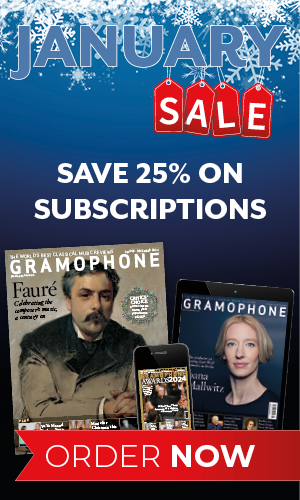A passion for Schnittke
Roman Mints
Tuesday, May 17, 2016
The first time I heard Alfred Schnittke’s music was at children’s music school: it was his Suite in the Old Style, a fairly easy piece to play and understand, notably the Minuet. I remember that one of the teachers, on hearing me play the Minuet, said: 'See, he can write normal music!' At that time I didn’t know what he meant, but a few years later, when I began to take an interest in dissonant music, the Soviet record label Melodiya started to release LPs of Schnittke’s symphonies conducted by Gennady Rozhdestvensky. I bought these records, my mother bought them, and I was also given them as birthday presents by my schoolmates. It never occurred to them that, as someone interested in this music, I might already have them. So I wound up with several copies of each record, and in turn gave them to my friends. People began to believe that Schnittke was my favourite composer. And even though that isn’t exactly true, I do still have a particular connection to his music. Although I stopped buying records of his music long ago, I have always found it easy to play – for me it is simple and clear, and it speaks my language.
Coming to London in 1994, I quite coincidentally discovered a fellow spirit in my professor, Felix Andrievsky, who had liked Schnittke’s music from his youth and was one of the first (besides its dedicatee Mark Lubotsky) to play his Sonata No 1. I studied all three sonatas, among other works, in Andrievsky’s class. I had read some studies of Schnittke as well as a couple of books of conversations where he discussed his music. But these were mostly about structural and other technical details, while Andrievsky was teaching me to think in terms of imagery. Unlike many other composers’ music, Schnittke’s brings to mind very definite images, a result I think of how much work he did for cinema. Naturally I got much more out of my lessons with Andrievsky than all the theoretical tomes I read, and I learned to hear the simple, graspable emotions in this music.
In 1999 I recorded my first disc on the Black Box label, and suggested making a record of all Schnittke’s sonatas, as a second. I did a lot of preparation, but two weeks before the recording I developed a serious and long-term condition in my arm, and it never happened. When the condition passed, I was told we had missed the boat. I believe now that this was all for the best.
As the years went by, Schnittke remained in my repertoire and one day, planning a concert in the Small Hall of the Moscow Conservatory, I decided I would perform all the music Schnittke had written for violin and piano. Working on the programme, I realised some things I’d previously only suspected. First, his works for violin and piano covers every period of his creative life, and could even be an ideal guide to Schnittke’s world. From the dodecaphony of the first part of the Sonata No 1 via the polystylistic No 2 to the flayed, dry, deathly late style of No 3: it’s all there – the film music of Suite in the Old Style, the stylized Gratulations Rondo, the characteristic Schnittkean distortions of other people’s music in Stille Nacht and the well-known polka from The Census List. These few pieces contain his entire artistic trajectory, his whole life.
Secondly, I began to understand why I felt so close to him, even though he was perhaps not as a 'perfect' as some other composers. Sometimes his music illustrates even too accurately the life we lived back then. For anyone who didn’t live in the Soviet Union this might be hard to understand, but for me, this music is precisely about us, about that life, those pains, those joys, about the things you couldn’t say out loud but which you could whisper in the ear, and so on. Hearing or playing it conjures up the films his music was written for (Schnittke would often use the cinema as a creative laboratory – for instance, every section of Suite in the Old Style is taken from his film music). That’s why he was so popular, that’s why admirers and detractors of both composers call him direct heir of Shostakovich. And that made it simpler and easier for me to play this music – it was as if it was about me, too.
Putting together the programme for that concert, I realised that playing everything in chronological order – ie, with Sonata No 3 at the end – would probably drive some of the audience to kill themselves, so oppressively leaden and cheerless is this music. After mulling it over I decided it would be best to play the sonatas in reverse order – going from death to life rather than the other way round; and between the sonatas I would scatter the other pieces. Happily, I came across the score of a rare arrangement of Suite in the Old Style for viola d’amore, harpsichord and percussion. Made (under the watchful eye of the composer) by the well-known Russian viola-player Igor Boguslavsky, this version sounded like the soundtrack to one of the fairy-tale films I watched as a child. So I taught myself to play the viola d’amore, and went on to perform other pieces on this instrument. That concert was a few years ago; and then last year I decided to finally finish what I had been unable to do before and record these pieces, in the same order as at the concert.
Shortly after that I suddenly discovered that in the meantime another sonata for violin and piano had come to light, a product of Schnittke’s youthful years. I listened to it, spoke to various people who knew Schnittke personally, and decided against recording it. I believe it was a mistake to publish this early, not very successful work. The composer didn’t include it in his own list of works, didn’t assign it a number, and it feels right to follow his wishes. His Opus 1 – the only work he gave an opus number to – was written after this sonata. It’s not really Schnittke, or rather: it isn’t yet Schnittke. And that’s why it isn’t on this album of Schnittke’s music for violin and piano.
Now that I have finished this record, it feels as though one more chapter of my life is over – could this be the mid-life crisis? – and my relationship with this music became clear to me. Now I am more interested in Brahms...
Roman Mints's recording of Schnittke's complete works for violin and piano (on Quartz) will be released on May 27, 2016. Roman Mints and pianist Katya Apekisheva will be playing Schnittke's First Sonata at Kings Place in London on May 26, 2016. For ticket information, visit: kingsplace.co.uk









